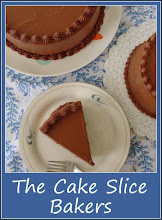I love pumpkin and all the different shapes, sizes and colours they can come in. When I recently spied an unusual looking bright yellow skinned pumpkin at a farmers market, I was quick to snap it up. Upon slicing into it I was disappointed to find a very pale flesh that was rather watery. It smelt and looked very much like melon but I decided not to judge it too harshly and roasted some in the oven to taste. This improved the flavour and texture but it was still rather watery rather than being rich and fluffy. I knew instantly what this particular pumpkin was destined for – soup!
Soup is a wonderful thing and can make even the most bland, old, shrivelled or oddly shaped vegetable taste delicious. I really wanted my pumpkin soup to have more of conventional pumpkin colour and so I decided to add some red pepper and carrots to enhance the colour and bulk out the texture. I decided against adding onion or potato which often form the base of most soups as I wanted the veg to the star flavours.
Once blitzed together the pepper and carrot transformed the soup into a gorgeous deep orange colour that was flecked here and there with little shreds of yellow and red from the skins of the peppers and pumpkin – which I chose to leave on. It really looked and smelt so inviting and the taste was delicious. The pepper added a lovely sweetness while the pumpkin added its famously smooth and creamy texture. It was the perfect consistency and made for a very tasty lunch on a cold and windy autumn day.
Red Pepper Pumpkin Soup
Ingredients
1 small-medium pumpkin
2 red peppers
2 carrots
2 tsp dried oregano or thyme
2 pints vegetable stock
Method
Cut the top and base off the pumpkin. Cut into quarters, scoop out the seeds and fleshy membrane and discard. Slice the pumpkin into 2cm strips and place in a large saucepan, skin and all.
Do the same with the red pepper.
Peel and roughly chop the carrot and add to the pan along with the herbs.
Pour over the vegetable stock and bring the mixture to the boil, then reduce to a simmer and leave to bubble for 25-35 minutes, until the pumpkin and carrot pieces are soft when tested with the sharp tip of a knife.
Once ready, remove from the heat and allow to cool for 10 minutes.
Then ladle the mixture (you may need to do it in batches) into a liquidiser and blend until smooth.
Season to taste and serve with crusty bread for dipping.
Serves 4-6
Blueberry Cake - Incredibly Moist
13 hours ago





































